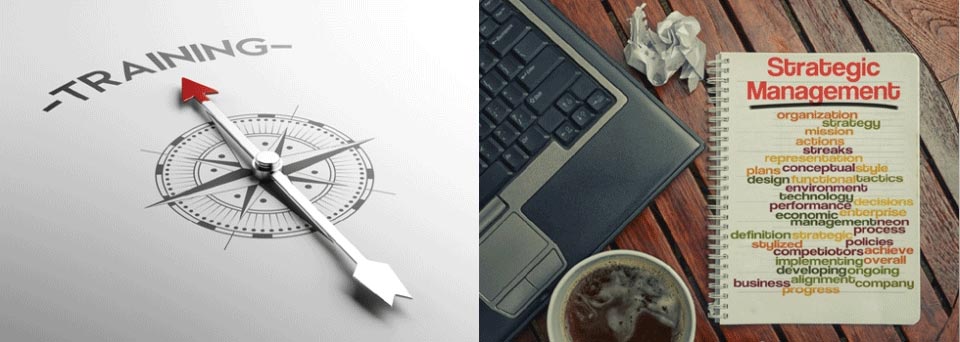Date: 14th July, 2016:Immersive Media: A new Frontier powered by Virtual Reality
Key Speakers: Mr. Bryan Yeager (Senior Analyst, e-Marketer) & Wendy Tai (Product Manager, Aurasma)
This write-up discusses the various points learnt during the webinar on Virtual Reality (VR) and Augmented Reality (AR). It will discuss the various points where the two converge as well as curcial distinctions.
Premise
A critical mass of people is nowadays talking about Augmented Reality. This is due to the rage that the game Pokémon Go has proven to be across numerous generations of gamers. Virtual Reality as a concept sounds similar but some crucial differences exist. Gaming platforms are using both these forms to hook users.
Virtual Reality (VR) v/s Augmented Reality (AR)
VR is that technology by which the user completely immerses in the virtual world or experience. AR on the other hand plants virtual objects and digital information on top of real world physical objects or places. A third concept known as Mixed Reality (MR) is where virtual as well as real world objects exist interchangeably. Even physical bots and software to use AR and VR are quite different. VR requires dedicated tools while normal smartphones may be used effectively to conduct AR. Google Daydream is one such software to enable VR and Microsoft Holo Lens is an object used for AR. Both these forms of technology have existed surprisingly for decades.
It is important to note however that their impacts on marketing are quite the opposite. VR experiences target top of the funnel marketing but AR has proven to be an ideal tool for middle and bottom funnel.
Corporate Investment on Virtual Reality and Augmented Reality
Corporate IT giants- Facebook, Google and Apple- are all betting huge on these technologies. All three have made corporate acquisitions accordingly. VR and AR are wedded into the corporate strategy of these firms. Facebook is leading the pack with a ten year outline for AR glasses. Google has added support to its video sharing platform YouTube. This convergence will enable digital marketing of Google’s own AR and VR products using YouTube. Apple for its part has filed patents on AR and VR. The total investment by these companies exceeds US$ 2.5 billion.
While these 3 major aggregators are bullish about the upcoming prospects in this industry, they are taking it all with a note of caution. That is because several industries to whom they will potentially be vendors in the future, are themselves unsure about its uses in the coming times. Besides gaming, it is the world of education that is using these technologies so much. Gamification is a major tool being used in Executive MBAs in order to create more effective online learning systems. Similarly firms are also using up such technology for creating 3D simulation, imaging and recognition tools. Major VR players at present include IT giants such as Facebook, Apple and Google plus specialized applications such as Oculus, Steam and air push.
Technology Improvements
Smartphones have leveraged existing technology to take AR to a new level altogether. Now it is handy and scalable for people to use. Improved visuals have made gaming using AR or VR more attractive to the casual players. A consistent data supply however is needed to continue the support of AR in particular as it often involves leaving the domestic space. Data consuming locations tags are then used.
Majority of users in the USA are still not sure of the future of such technologies. This presents the IT giants with a huge opportunity to tap in the near future. These firms are tracking AR or VR related conversations on social media in order to capture vital business intelligence. The existing curiosity can best be exploited by these firms if they provide the requisite content to hook this inquisitive crowd. In order to get more people interested, activities such as live events or in store placements have been integrated into the system. Google Tango can now direct the AR users accurately to the spot where the next game pit-stop is.
The Business of AR & VR
As per marketing research conducted by Trend Force, the size of the market for this industry will be worth US$ 70 billion by the year 2020. Interestingly, mobile users will substantially outnumber desktop users during this period. This trend already exists but will fortify over the next couple of years. A specialized VR devices have improved in terms of quality, expensive VR desktop sets’ demand has reduced. Gaming platforms may also see a likewise decline in business numbers over the next few years, due to the onslaught of smartphones. Reliable data however does not exist to differentiate between the numbers of AR and VR as the users are often common and data was collected simultaneously.
Costs of implementing an AR system also vary depending on the specific requirement. A good way of recovering the costs could be on-world placement of virtual advertisements. A lot of AR traffic is being diverted specifically to partner stores. This is inducing a buying behaviour among users of Augmented Reality (AR).
Content
Top notch content is very much needed to make AR or VR succeed. Also it must communicate the right intended message. Magazine ads, direct mail, catalogs, brochures and circulars are effective ways to conduct such processes. Korean auto giant Hyundai has developed great content to use AR to help drivers negotiate their cars. Some of the driving functions are now being finalized using this cutting edge piece of technology. Similarly, beauty and wellness market leader Sephora has inculcated AR to enable customers to try the lipstick before buying. Only thing being, here the trying is virtual. Even Snapchat has used AR based content to engage with users during video chats.
Conclusion
Augmented Reality and Virtual Reality can both be massive industries in themselves in the coming years. The coming together of the two is termed as immersive media. This is being used in some ways by various industries notably gaming, navigation and education. Nothing explains the potential of these fields as much as the enormous success of Pokémon Go does. The game has seen record downloads till date with no signs of taking a break.
Forum: https://www.emarketer.com/
[csblink]



